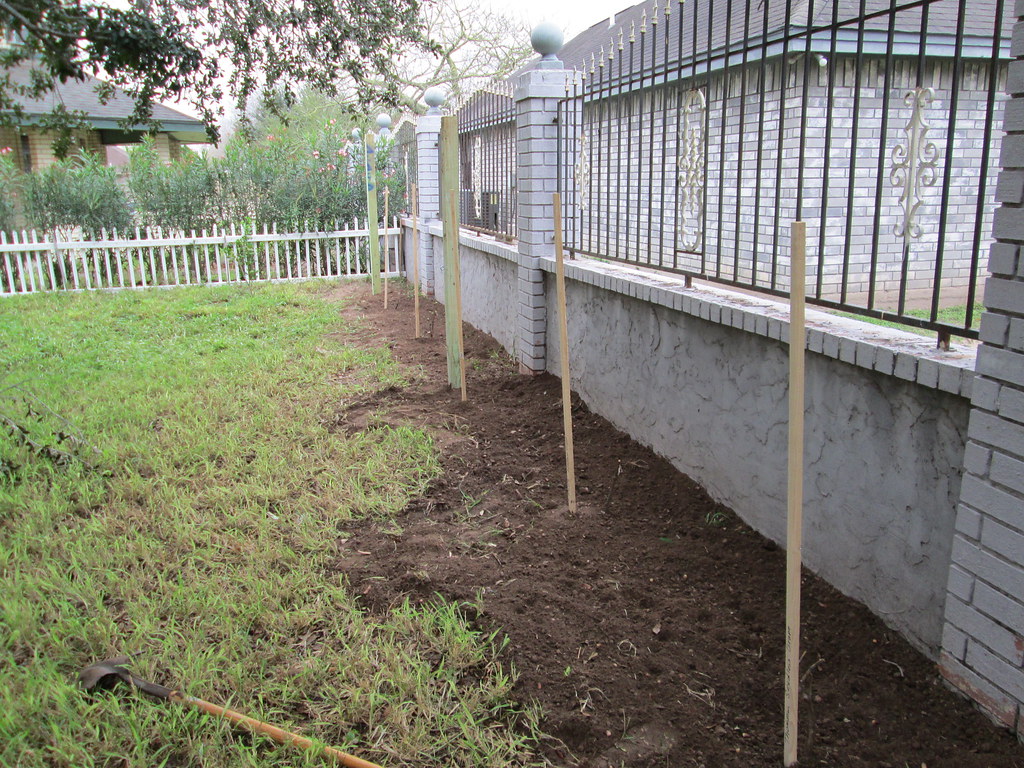joshuamurphy75
Junior
- Joined
- Jan 3, 2013
- Messages
- 8
- Reaction score
- 0
I have been gardening for about 6 years with a focus on fruit trees and annual vegetables. This is only my second time dealing with grapes. My soil is very shallow top soil, with heavy alkaline clay about a foot down. I am at about sea level with a very low water table, in growing zone 9b. Some hibiscus did experience root rot a couple years back on the opposite side of the yard. The land is humid and windy but there is little rain.
The east side of the property has steel fence with a brick base extending about 2 to 3 feet up. I tilled in the ground near the fence and planted some green manures. I also started to install trellis posts about 2 feet from the fence to install high tensile wire for training. I am thinking of using a VSP method of pruning where my horizontal cordons will be trained to a wire at the hight of the top of the bricks.
I purchased 9 varieties of grapes for this experiment. I doubt I will ever make wine, but I decided to buy a few wine grapes so I could experiment with the vines.
Wine Grapes:
Petite Sirah
Sangiovese
Malbec
Tempranillo
Table Grapes:
Mars Seedless
Flame Seedless
Concord
Thompson Seedless
Monukka Seedless
I have very poor drainage where I want to plant and would like to build up the elevation of the soil before planting. I have considered using pure compost, but I have read that grapes seem to produce a better tasting product when the vines struggle a bit. Any suggestions?
The east side of the property has steel fence with a brick base extending about 2 to 3 feet up. I tilled in the ground near the fence and planted some green manures. I also started to install trellis posts about 2 feet from the fence to install high tensile wire for training. I am thinking of using a VSP method of pruning where my horizontal cordons will be trained to a wire at the hight of the top of the bricks.
I purchased 9 varieties of grapes for this experiment. I doubt I will ever make wine, but I decided to buy a few wine grapes so I could experiment with the vines.
Wine Grapes:
Petite Sirah
Sangiovese
Malbec
Tempranillo
Table Grapes:
Mars Seedless
Flame Seedless
Concord
Thompson Seedless
Monukka Seedless
I have very poor drainage where I want to plant and would like to build up the elevation of the soil before planting. I have considered using pure compost, but I have read that grapes seem to produce a better tasting product when the vines struggle a bit. Any suggestions?










